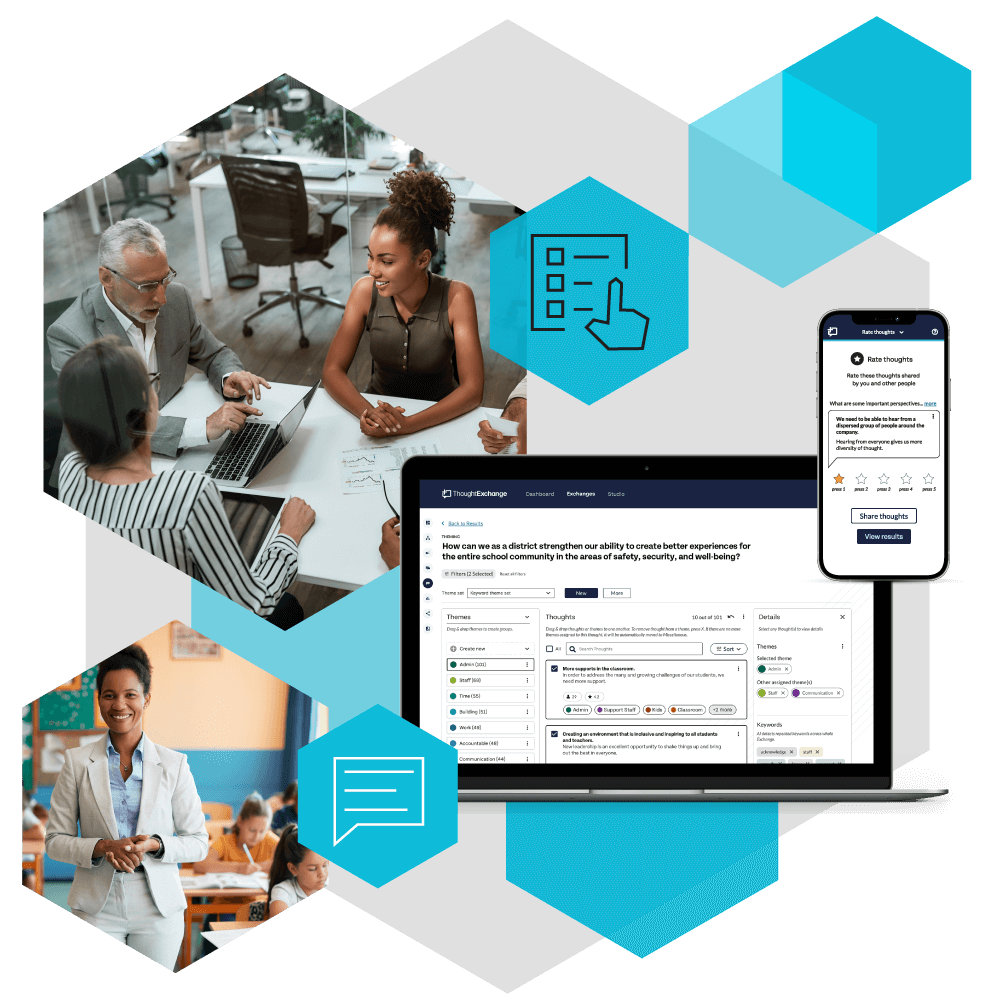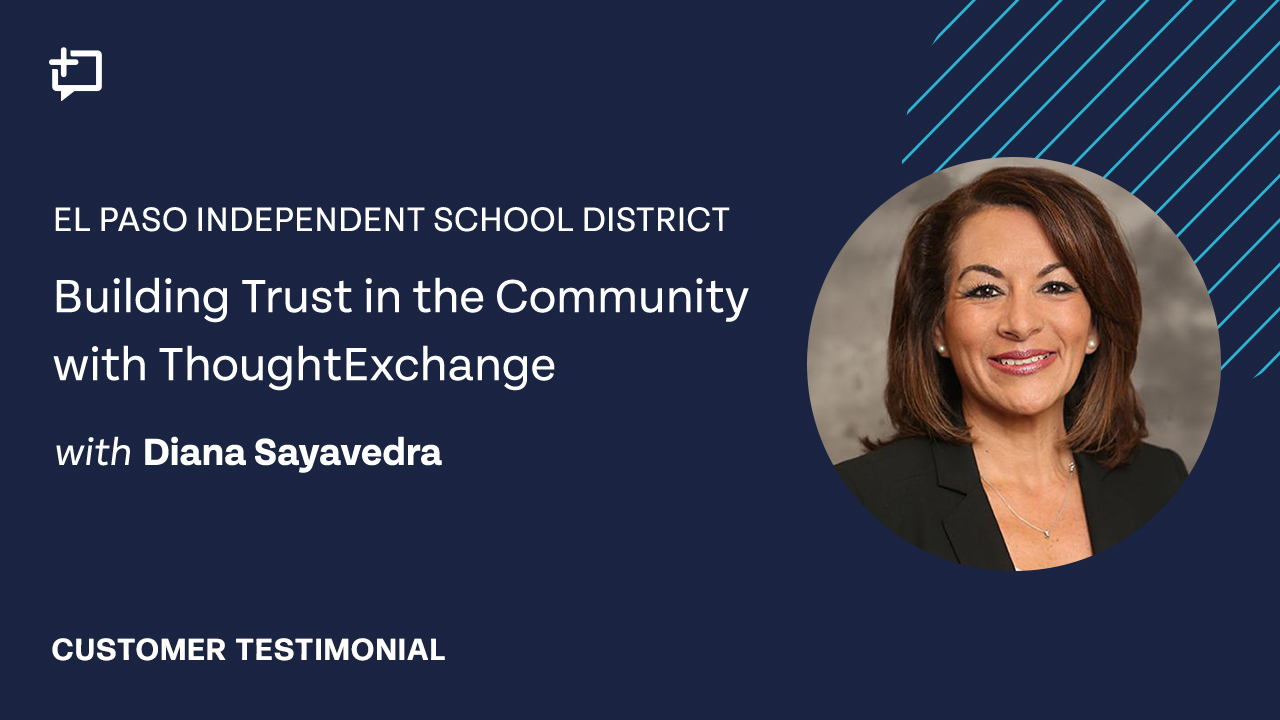







Why Inclusive Leadership in Schools Matters–3 Tips to Get You There
Creating inclusive school districts can profoundly impact your community. They help education leaders achieve their goals–from getting bonds and levies approved to finding common ground on divisive issues. But, most importantly, inclusive school districts support students to reach their full potential.
According to MacKay & Burt-Garrans (2004) an inclusive district is “a school system that in both its design and its effect continually strives to ensure that each student has access to and is enabled to participate in the school community, to be part of the community in positive and reinforcing ways and whose identity is reflected in the operations of the school community.”
Inclusive districts start with inclusive leadership in schools. Engage your community in the decision-making process for the best results. In this post, we discuss effective school leadership and share three tips for making it more inclusive. You’ll learn how to enhance and broaden access within your district, align community priorities in polarized times, and create equity at scale, so all of your students can thrive.
See ThoughtExchange in Action — Explore the Product Tour
In this Article
What is the role of leadership in schools?
Leadership is critical in education, and sets the tone for progress toward district goals. Educational leaders play an essential role in making this happen as they oversee all aspects of the organization, ensuring schools run smoothly, and motivating their people to contribute to their district’s success.
School leadership can be defined as “the process of enlisting and guiding the talents and energies of teachers, pupils, and parents towards achieving common educational aims.” So, education leaders play a pivotal role in affecting their school’s climate, attitude, and reputation. As a learning community’s foundation, exemplary leadership in schools can create a place where students are not only educated but challenged, nurtured, and encouraged.
On the other hand, inadequate school leadership can undermine an educational system’s goals. When schools lack a strong foundation and direction, learning can be compromised, and students can suffer.
What is an example of leadership in schools?
Successful leadership isn’t a solitary endeavor. Experienced leaders know they need to engage their communities to succeed—and engaging students is especially important for creating inclusive, thriving schools. In many districts, engagement requires accommodating many different community groups and understanding different perspectives. Successful leaders find ways to bridge gaps across their communities and align people on common goals.
According to a Wallace Foundation study, “Leadership is second only to classroom instruction as an influence on student learning.”
Education leaders have complex jobs. From mentoring or coaching colleagues, to serving as department chairs or multi-classroom supports, to spearheading building initiatives or broader policy work.
3 tips for becoming a more inclusive leader
High-performing schools and systems rely on all constituents to work together to improve student achievement. And at all levels, school leaders are responsible for making decisions. So what makes a good leader in a school?
Traits of good school leaders vary. However, there are certain leadership skills, strategies, traits, and beliefs that many of the most effective, inclusive school leaders share. Here are a few and how to achieve them.
Traits
How to achieve them
- Prioritize community building
Effective school leaders prioritize building and nurturing partnerships with their families and communities. These relationships help them create inclusive, caring, culturally responsive school communities.
Example: Saddleback Valley USD uses ThoughtExchange “to get big picture, big group feedback” and ensure an authentic community voice in district plans.
Enhance and broaden access
Your community has evolved—your parents are tech-savvy millennials who are busier than ever. Your students are digital natives. You need to tap into their collective intelligence to succeed.
- Incorporate an easy-to-use, intuitive platform into your engagement efforts
- Make sure it includes multilingual capabilities
- Ensure engagement initiatives can be accessed on any device
- Pair an accessible tech solution with meetings and town halls to capture more voices, create inclusive, equitable conversations, and build community
- Make the most of data and resources
Successful school leaders listen to their communities and get the right data for actionable insights. This allows them to promote equitable, culturally responsive opportunities for their students and make inclusive decisions based on their community’s needs.
Example: Union Public Schools used ThoughtExchange to get community support for a 75-year-old mascot change.
Read the StoryGet the right tech
The right tech enhances your engagement initiatives, going beyond meetings and town halls to ensure you get accurate community insights.
- Make sure your engagement initiatives use anti-bias tech and identify common ground issues, so you aren’t just hearing from special interest groups
- Use a platform that provides anonymity for participant safety as well as robust moderation to keep the conversation respectful
- Consider an engagement platform that provides both classic survey functionality for quick quantitative data, and more in-depth multidirectional communication for qualitative data
- Create collaborative, inclusive learning environments
Inclusive learning gives all students access to flexible learning choices. It also provides a path for students to achieve educational goals in spaces where they experience belonging.
Example: Douglas SD builds trust and transparency with the community using ThoughtExchange.
Read the StoryCreate equity at scale
While creating equity on a large scale can be daunting, it’s essential for an inclusive leader’s success.
- Ensure you prioritize inclusivity and diverse perspectives and experiences
- Use engagement tech that identifies polarized groups and the issues they agree on
- Use multi-lingual engagement methods to connect across language barriers
- Provide transparency into community perspectives at scale
Inclusive leadership in schools made easy
Engaging your community is essential for effective leadership in schools. Reach out to your teachers, parents, staff, and students to learn about what they want and need—and act on their insights.
While education leaders will still have to depend on their relationships and people skills, the right technology can make things easier. Use a survey and engagement platform like ThoughtExchange to hear from your people quickly and easily. You’ll become a more inclusive leader and your community will reap the benefits.





